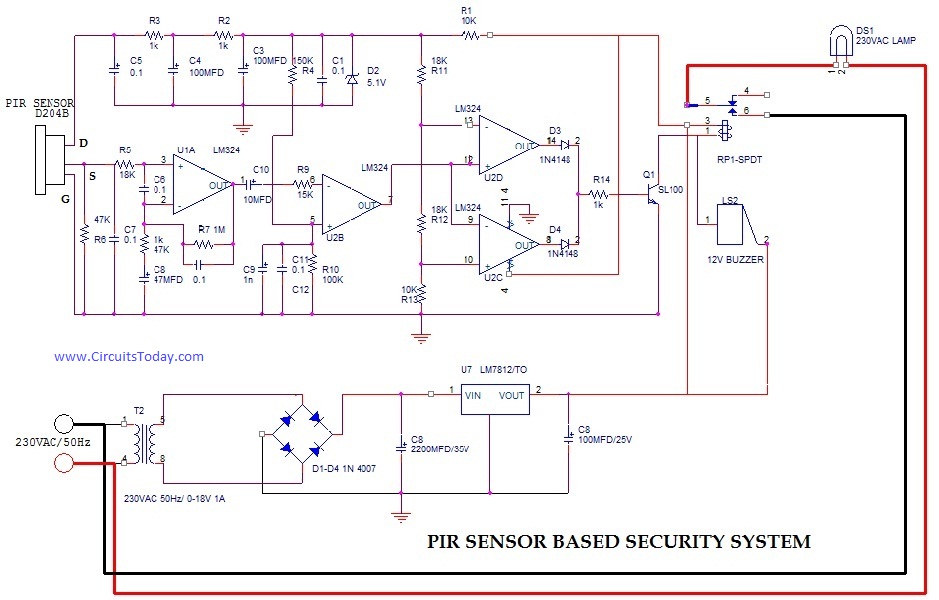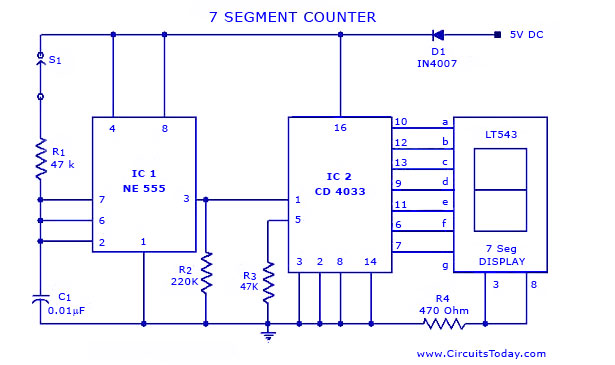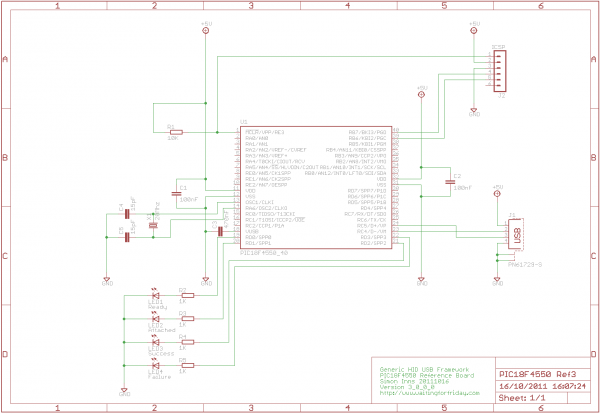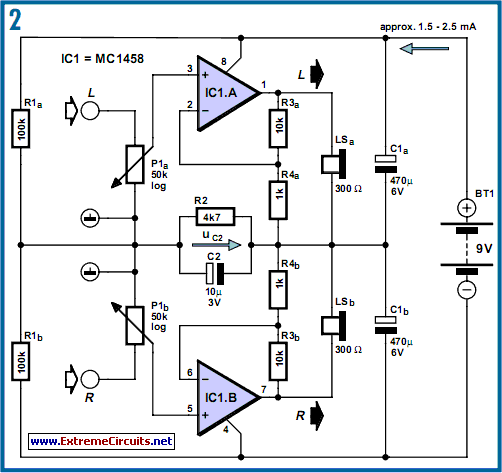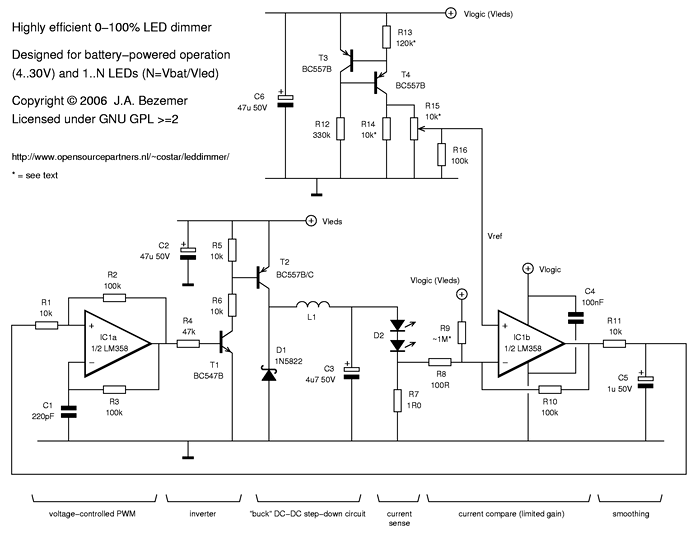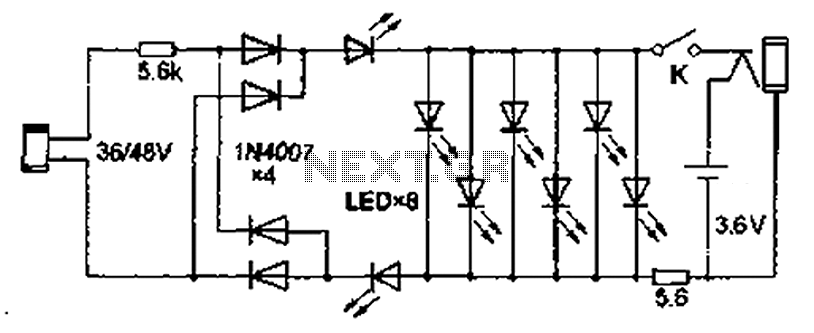
LM324 Based LED VU-Meter

The circuit is conventionally designed with an eight LED audio level meter made from two low-power quad op-amps utilizing the LM324. Volume Unit.
The eight LED audio level meter circuit serves as a visual representation of audio signal levels, providing real-time feedback on the amplitude of audio inputs. The use of two low-power quad op-amps, specifically the LM324, allows for efficient signal processing while minimizing power consumption.
The circuit typically operates by receiving an audio signal, which is then amplified and processed by the op-amps. The output from the op-amps controls the illumination of the LEDs, where each LED corresponds to a specific range of signal levels. This arrangement enables the user to easily monitor audio levels, ensuring optimal performance and preventing distortion.
In this design, the op-amps are configured in a way that allows for a precise response to varying audio levels. The first stage may involve signal conditioning, such as filtering and amplification, to prepare the audio signal for further processing. The second stage utilizes the quad op-amps to compare the processed signal against predefined thresholds, which are set to activate the corresponding LEDs.
The LM324 op-amp is particularly advantageous due to its low power consumption and ability to operate over a wide voltage range, making it suitable for battery-operated devices. The circuit design may also include resistors and capacitors to set the gain of the op-amps and to stabilize the output, ensuring that the LEDs respond accurately to the audio signal.
Overall, this circuit design is effective for applications where audio level monitoring is essential, such as in mixing consoles, audio interfaces, and sound reinforcement systems. The implementation of the LM324 op-amps in conjunction with the LED indicators provides a reliable and efficient solution for visual audio level monitoring.The circuit was conventionally designed with eight LED audio level meter made out of two low power quad op-amps which utilizes LM324. Volume Unit . 🔗 External reference
The eight LED audio level meter circuit serves as a visual representation of audio signal levels, providing real-time feedback on the amplitude of audio inputs. The use of two low-power quad op-amps, specifically the LM324, allows for efficient signal processing while minimizing power consumption.
The circuit typically operates by receiving an audio signal, which is then amplified and processed by the op-amps. The output from the op-amps controls the illumination of the LEDs, where each LED corresponds to a specific range of signal levels. This arrangement enables the user to easily monitor audio levels, ensuring optimal performance and preventing distortion.
In this design, the op-amps are configured in a way that allows for a precise response to varying audio levels. The first stage may involve signal conditioning, such as filtering and amplification, to prepare the audio signal for further processing. The second stage utilizes the quad op-amps to compare the processed signal against predefined thresholds, which are set to activate the corresponding LEDs.
The LM324 op-amp is particularly advantageous due to its low power consumption and ability to operate over a wide voltage range, making it suitable for battery-operated devices. The circuit design may also include resistors and capacitors to set the gain of the op-amps and to stabilize the output, ensuring that the LEDs respond accurately to the audio signal.
Overall, this circuit design is effective for applications where audio level monitoring is essential, such as in mixing consoles, audio interfaces, and sound reinforcement systems. The implementation of the LM324 op-amps in conjunction with the LED indicators provides a reliable and efficient solution for visual audio level monitoring.The circuit was conventionally designed with eight LED audio level meter made out of two low power quad op-amps which utilizes LM324. Volume Unit . 🔗 External reference
